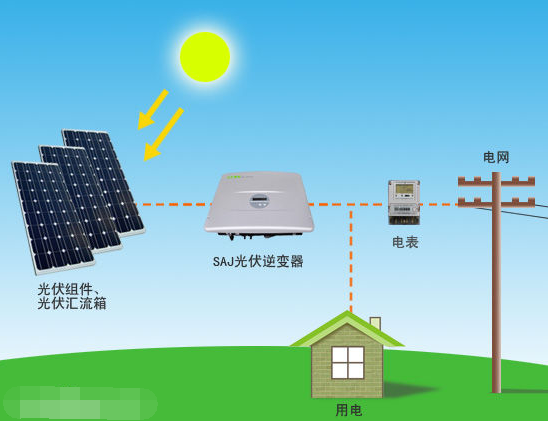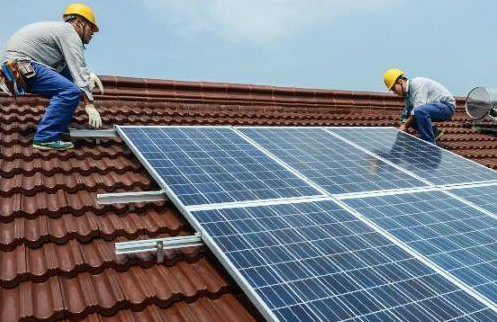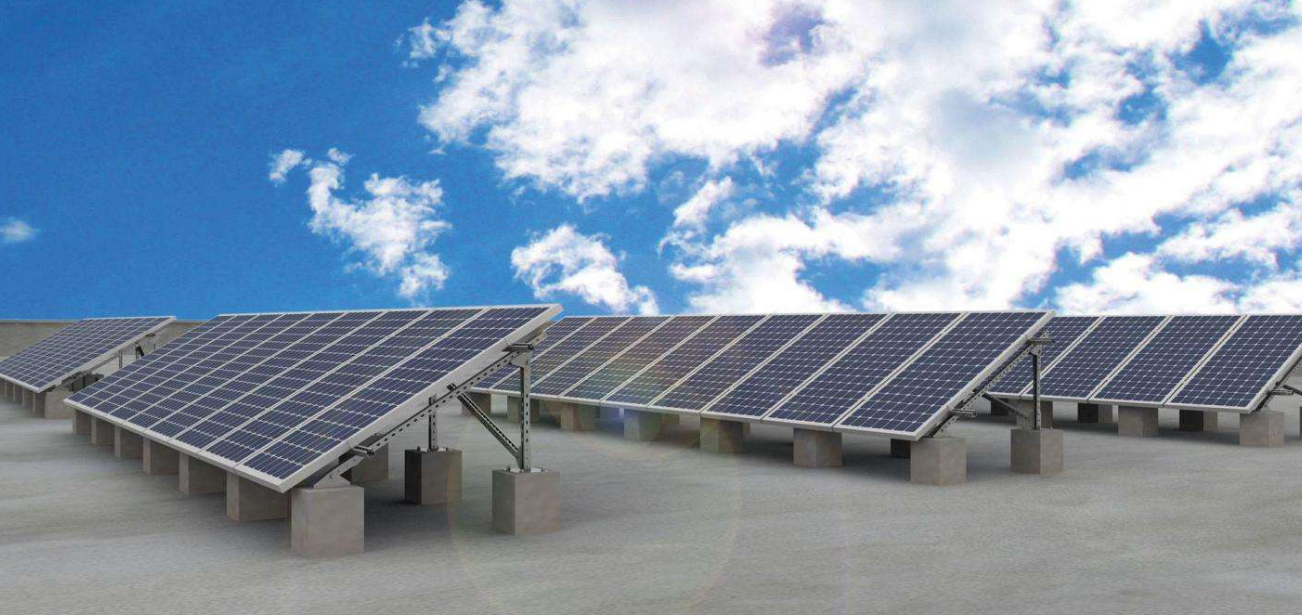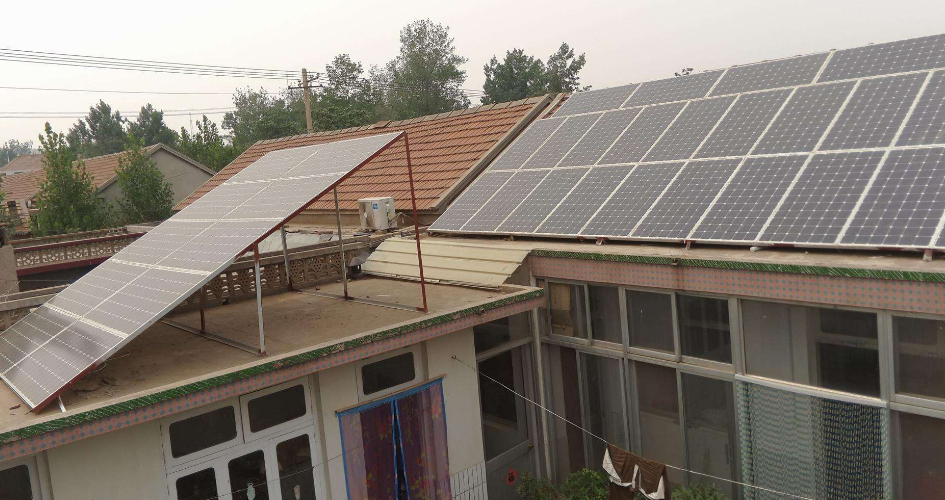Does rooftop photovoltaic power have radiation? Analysis of the advantages and disadvantages of rural rooftop photovoltaic power generation
Photovoltaic power generation is a technology that directly converts sunlight into electricity using the photovoltaic effect of semiconductor materials. It typically consists of three main components: solar panels (or modules), a controller, and an inverter. The core of the system is made up of electronic elements. Solar cells are connected in series and encapsulated to form large-area solar modules, which are then combined with a controller and other components to create a complete photovoltaic power generation system.
The fundamental principle behind photovoltaic power generation is the photoelectric effect in semiconductors. When light photons strike a metal surface, they can be absorbed by electrons within the material. If the energy of the photon is sufficient, it allows the electron to overcome the binding force of the metal and escape as a photoelectron. Silicon, a common semiconductor material, has four valence electrons. By doping pure silicon with atoms like phosphorus (which has five valence electrons), an N-type semiconductor is formed. Similarly, doping with boron (which has three valence electrons) creates a P-type semiconductor. When P-type and N-type materials are joined, a potential difference is created at their junction, forming a solar cell. When sunlight hits this P-N junction, electrons move from the N-region to the P-region, while holes move in the opposite direction, creating an electric current.
The photoelectric effect refers to the phenomenon where light generates a voltage between different semiconductor layers or between a semiconductor and a metal. This process involves two steps: first, converting photons into electrons, thus transforming light energy into electrical energy; second, generating a voltage that can be used for power.

**Photovoltaic Power Generation Schematic**
After the polycrystalline silicon is grown into ingots, cut into wafers, and processed, a P-N junction is formed by doping the wafer with small amounts of boron or phosphorus. Then, silver paste is screen-printed onto the wafer to create a grid pattern, which is sintered to form the back electrode. An anti-reflective coating is applied to the front surface, and the finished cell is assembled into a module. These modules are then connected in series or parallel to form a larger circuit board.
A typical photovoltaic system includes an aluminum frame, front glass, and a backsheet with electrodes. With additional components such as inverters and mounting structures, a full power generation system can be built. To convert direct current (DC) into alternating current (AC), an inverter is required. The generated electricity can either be stored in batteries or fed into the public grid. In terms of cost, about 50% of the total system cost comes from the solar modules, while the remaining 50% covers inverters, installation, and other equipment.
**Does the home photovoltaic power station emit radiation?**
A residential photovoltaic power station consists of photovoltaic modules, inverters, support structures, and cabling. The system converts sunlight directly into DC power through the properties of semiconductors and then uses an inverter to convert it into usable AC power. Since there are no chemical reactions or nuclear processes involved, photovoltaic systems do not emit harmful short-wave radiation.
Therefore, photovoltaic power generation is clean, non-polluting, and safe, making it an ideal source of renewable energy.

**Is it harmful to the body?**
Since photovoltaic modules do not emit radiation, they can even reflect some harmful UV rays from the sun. This means that instead of being harmful, they actually help protect us from the sun’s damaging rays. Additionally, using photovoltaics reduces reliance on fossil fuels, which leads to lower emissions of pollutants such as carbon dioxide, sulfur dioxide, and nitrogen oxides.
For example, using a photovoltaic system saves approximately 0.4 kilograms of standard coal and reduces pollution emissions by about 0.272 kg of carbon dust, 0.997 kg of COâ‚‚, 0.03 kg of SOâ‚‚, and 0.015 kg of NOâ‚“. As a result, air quality improves, and smog decreases, offering significant environmental benefits.

**Will the roof be damaged?**
Most household roofs are designed to support a load of around 200 kg per square meter. The weight of commonly used polycrystalline silicon photovoltaic modules and their mounting systems is usually around 30 kg per square meter. Before installation, professional engineers assess the structural integrity of the roof, considering factors like wind, snow, and seismic loads to ensure safety.
Thus, there is no risk of roof damage when installing a rooftop photovoltaic system.

**Advantages and Disadvantages of Rural Rooftop Photovoltaic Power Generation**
The development of distributed photovoltaic (PV) projects in China has been supported by various policies. For instance, State Grid Corporation issued guidelines on grid-connected services for distributed PV in 2012, followed by similar policies from China Southern Power Grid in 2013. These measures helped open up the market, leading to widespread adoption of residential PV systems across the country.
However, early on, challenges such as unclear grid connection rules, delayed subsidies, and tax issues emerged. Despite these problems, the industry referred to 2013 as the "Year of Distributed PV." Later, the government introduced tax exemptions for small enterprises, including residential PV users, which significantly improved the financial returns of home-based systems.
In China, installing a rooftop photovoltaic system offers several advantages:
**Quick Results**
Setting up a home PV system is fast. From application to grid connection, the entire process can be completed in as little as 15 days. Subsidies are usually paid within three months, making it one of the fastest renewable energy solutions available.
**Low Investment**
The average urban villa roof can accommodate a 5–8 kWp system, costing between 60,000 and 100,000 yuan. In rural areas, where electricity usage is lower, a 3–5 kWp system is often sufficient, allowing homeowners to enjoy clean energy at a reasonable cost.
women's digital watch,ladies smart watch ,round women's smart watch,stylish women's smart watch
Dongguan Yingxin Technology Co., Ltd. , https://www.dgyingxintech.com